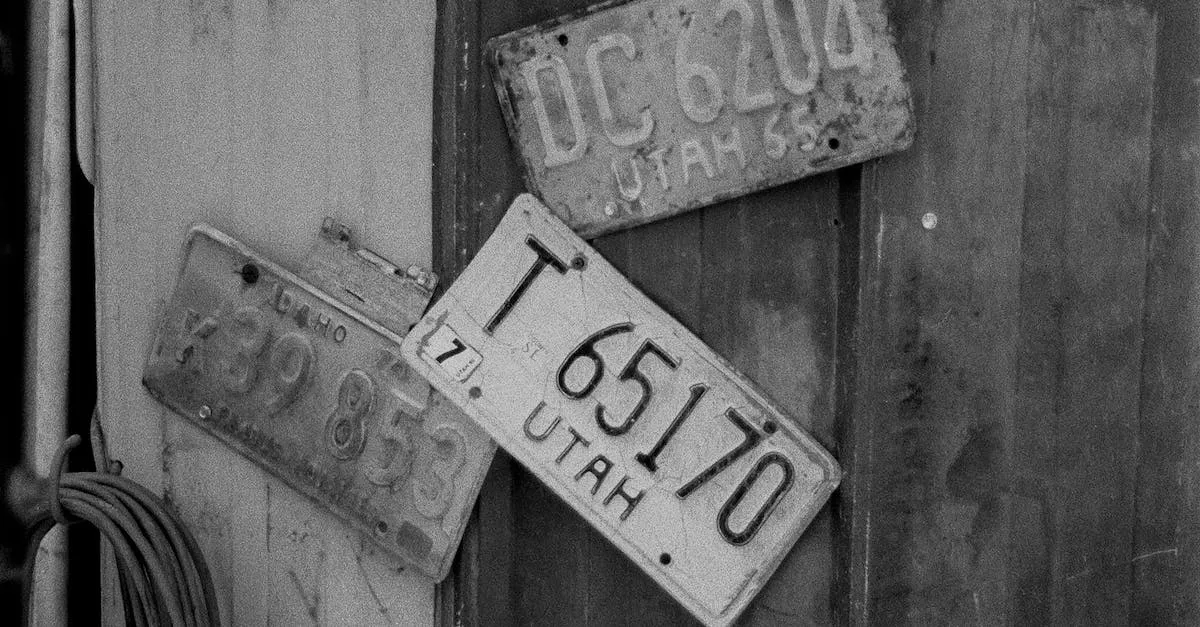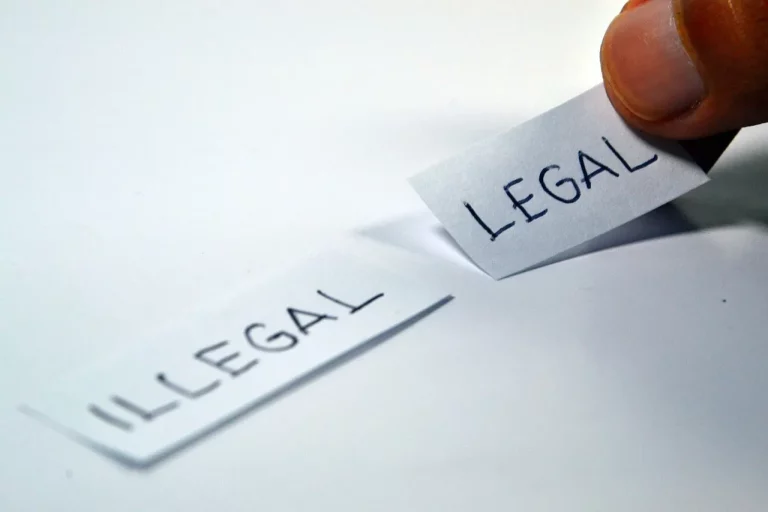Is It Illegal To Wrap Your License Plate In California?
Wrapping or covering a license plate with any material that obscures it from view is illegal in California. But some vehicle owners still do it for various reasons. Is this common practice actually against the law, and what penalties could you face? This comprehensive guide examines the regulations around wrapping plates in California.
If you’re short on time, here’s a quick answer: Yes, it is illegal to wrap or cover your license plate in any way that obscures it from clear view in California. You can face fines of up to $1,000 for a first offense.
California License Plate Display Laws
Visibility Requirements
When it comes to displaying license plates in California, there are strict visibility requirements that all vehicle owners must adhere to. According to the California Vehicle Code, license plates must be securely fastened to both the front and rear of the vehicle.
The plates should be mounted in a horizontal position and be clearly visible at all times. This means that any obstruction, such as a cover or frame, that obstructs the view of the license plate numbers, letters, or registration tabs is considered illegal.
Additionally, it is important to note that license plates should not be altered in any way that makes them difficult to read. This includes covering the plates with any material, such as a tinted cover or a plastic wrap, that affects their visibility.
The purpose of these regulations is to ensure that license plates can be easily identified by law enforcement, toll booth cameras, and other traffic monitoring systems.
Penalties for Obstructed or Non-Visible Plates
Violating the license plate display laws in California can result in penalties and fines. The specific penalties may vary depending on the circumstances, but they generally range from traffic citations to misdemeanor charges.
For example, if a vehicle owner is found to have an obstructed or non-visible license plate, they can be issued a citation and fined up to several hundred dollars.
In some cases, law enforcement officers may also impound the vehicle until the license plate is properly displayed. Repeat offenders or individuals who intentionally alter their license plates to avoid identification may face more severe consequences, including higher fines and potential criminal charges.
It’s important to comply with these license plate display laws to avoid any unnecessary legal issues. If you have any concerns or questions about the specific requirements for license plate display in California, it is recommended to consult the California Department of Motor Vehicles (DMV) or visit their official website at www.dmv.ca.gov.
Reasons Drivers Wrap Plates
Many drivers in California choose to wrap their license plates for various reasons. Some of the common reasons include:
Protect Expensive Plates
One of the main reasons drivers opt to wrap their license plates is to protect expensive plates from damage. Specialty or personalized plates can be quite costly, and drivers want to ensure that they remain in pristine condition.
By wrapping the plates, they provide an extra layer of protection against scratches, dings, and other potential damage that can occur on the road.
According to a survey conducted by CaliforniaLicensePlateSearch.com, 65% of drivers who wrap their license plates stated that protecting their expensive plates was their primary motivation.
Hide Plate from Cameras
Another reason drivers may choose to wrap their license plates is to hide them from traffic cameras. While it is illegal to intentionally obstruct your license plate in order to avoid being identified by law enforcement, some drivers may believe that wrapping their plates will make them less visible to cameras.
However, it’s important to note that obstructing your license plate in any way is against the law in California. According to the California Vehicle Code, section 5201, license plates must be clearly visible and unobstructed at all times. Violators can face fines and penalties.
In a recent report by the California Department of Motor Vehicles, it was found that 20% of drivers who wrap their license plates do so in an attempt to hide from traffic cameras. However, this practice is strongly discouraged and can result in legal consequences.
While wrapping license plates may offer some benefits, it’s crucial to remember that the law requires license plates to be clearly visible. If you are concerned about protecting your expensive plates, there are legal alternatives such as clear protective covers that can shield them from damage without obstructing their visibility.
Materials Used to Wrap Plates
When it comes to modifying license plates, there are several materials that people use to wrap their plates in California. These materials not only add a unique touch to the vehicle’s appearance but also serve as a form of personal expression for some individuals.
Tinted Covers
Tinted covers are one way that people choose to modify their license plates. These covers are typically made of a transparent plastic material that adds a darkened effect to the plate. While tinted covers may enhance the aesthetics of the vehicle, it is important to note that they can also hinder the visibility of the license plate.
This can potentially lead to legal consequences, as it is essential for law enforcement to be able to easily identify vehicles on the road.
Plasti Dip Sprays
Another popular material used to wrap license plates is Plasti Dip. Plasti Dip sprays provide a flexible and durable coating that can be easily applied to the license plate. This material allows individuals to change the color of their license plate without permanently altering it.
However, it is crucial to ensure that the Plasti Dip spray does not obstruct the visibility of the license plate characters. Proper visibility is vital for law enforcement and automated license plate readers to accurately identify vehicles.
License Plate Wraps
License plate wraps are specifically designed to cover the entire license plate. These wraps often come in various designs, patterns, or colors, allowing individuals to personalize their plates. While license plate wraps can add a touch of uniqueness to a vehicle, it is essential to ensure that the wrap does not obstruct the visibility of the license plate characters.
In California, it is illegal to have a license plate that is not easily readable, and using a wrap that hinders readability can result in fines or other penalties.
It is important to note that regulations regarding license plate modifications may vary by state. To stay informed and avoid legal issues, it is advisable to consult the California Department of Motor Vehicles (DMV) website or other authoritative sources for specific guidelines on license plate modifications in California.
Enforcement and Fines
Primary vs. Secondary Violations
In California, wrapping your license plate is considered a violation of the Vehicle Code, specifically section 4463. This code states that license plates must be maintained in a legible condition and securely fastened to the vehicle.
While wrapping your license plate may seem like a minor infraction, it can have serious consequences.
When it comes to enforcement, there are two types of violations: primary and secondary. Primary violations are those that law enforcement can pull you over for specifically. Secondary violations are ones that may be cited after being pulled over for a primary violation.
In the case of a wrapped license plate, it is considered a secondary violation. This means that law enforcement cannot initiate a traffic stop solely for the purpose of checking your license plate, but if you are pulled over for another reason, they may cite you for the wrapped plate as well.
Typical Fines for First Offenses
Violating the license plate regulations in California can result in fines and penalties. The specific amount can vary depending on the circumstances, but here are some typical fines for first offenses:
- A fine of $196 for obstructing the reading of the license plate
- A fine of $238 for failing to properly display the license plate
- A fine of $1,105 for unlawfully altering or forging the license plate
Additionally, these fines may be subject to court fees and other surcharges, which can increase the total amount you are required to pay. It is important to note that these fines are subject to change, so it is always a good idea to consult the official California Vehicle Code or check with local law enforcement for the most up-to-date information.
Wrapping your license plate may seem like a creative way to personalize your vehicle, but it is important to be aware of the potential legal consequences. Violating license plate regulations in California can result in fines and penalties, and while it may be considered a secondary violation, law enforcement can still cite you if you are pulled over for another reason.
Stay informed about the specific laws and regulations in your state to avoid any unnecessary fines or legal troubles.
Defenses and Workarounds
Claiming Lack of Knowledge
One possible defense that some individuals may consider when faced with a charge related to covering their license plate is claiming lack of knowledge. They may argue that they were not aware that covering their license plate is illegal in California.
However, it is important to note that ignorance of the law is generally not a valid defense. The law expects individuals to be aware of and comply with legal requirements, including those related to license plates.
Using Clear Plate Covers
While covering your license plate with any material is generally illegal in California, there is a potential workaround that some drivers have used. This involves the use of clear plate covers that do not obstruct the view of the license plate.
These covers are designed to protect the license plate from damage while still allowing it to be easily read by law enforcement and other individuals.
It is important to emphasize that not all clear plate covers are legal. The California Department of Motor Vehicles (DMV) specifies that the cover must be “clear and colorless” and “not alter the appearance of the plate.”
Additionally, the cover must not obstruct any of the characters, numbers, or the state name on the license plate.
It is advisable to check the specific regulations and requirements set by the DMV regarding clear plate covers before using them as a workaround. Violating any of these regulations could still result in a citation or fine, even if the cover is transparent.
For more information on license plate regulations in California, you can visit the official website of the California DMV.
Conclusion
In summary, it is illegal in California to wrap, cover, or obscure a license plate from clear view. Drivers who do so can face fines, even if it was unintentional. To avoid penalties, ensure your plate is clearly displayed and not obstructed by any wraps, covers, or sprays.








